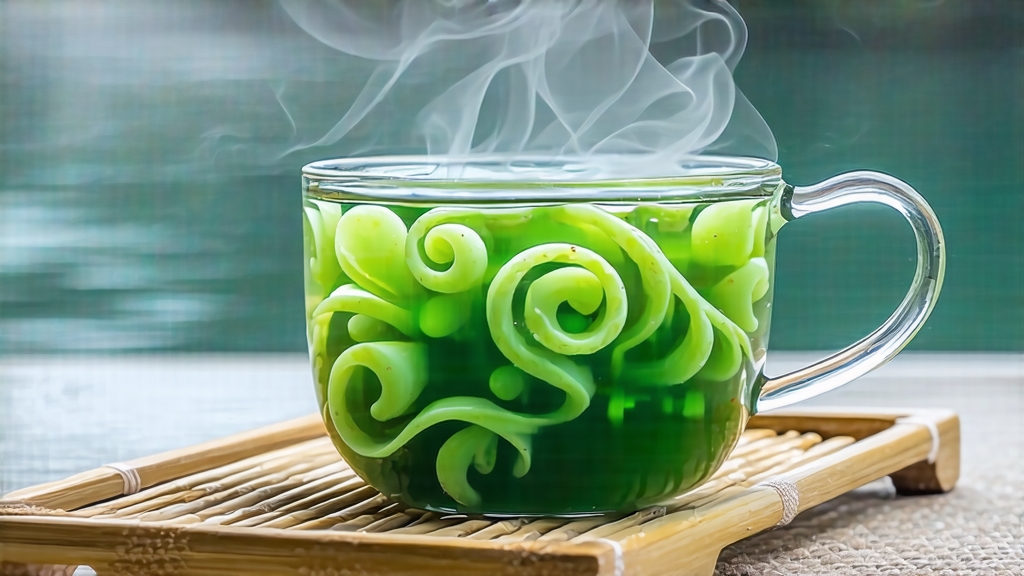
Biluochun, whose name translates literally to “Green Snail Spring,” is one of China’s ten most celebrated green teas, yet among Western connoisseurs it remains an undiscovered miniature masterpiece. Grown on the mist-locked, fruit-scented hillsides of Dongting Mountain that rise from Taihu Lake in Jiangsu Province, this tea is prized for its tiny, spiral-shaped leaves, an aroma that oscillates between orchid and ripe apricot, and a liquor so gentle it can feel like drinking liquid jade sunlight. To understand Biluochun is to step into a 1,200-year-old story of imperial whim, horticultural accident, and meticulous craftsmanship that still depends on a five-second timing decision made over a 300 °C wok.
Historical whispers place the tea’s birth during the Tang dynasty, but credible documentation begins in the late Song, when mountain monks offered an unnamed curly tea to traveling scholars. Its modern reputation crystallized in the Kangxi era (1662-1722). Legend says the emperor, touring the lower Yangtze, was served a tea whose fragrance preceded the water’s boil; intrigued, he asked its name. Locals replied “Xia Sha Ren Xiang” (“scary fragrance”), a folk label acknowledging its intense aroma. Kangxi, disliking the vulgarity, renamed it Biluochun, evoking both its tight spiral and the season of earliest picking. Within decades the tea became tribute, shipped north in small bamboo-lined chests cushioned with orange peel to preserve moisture and perfume.
The tea gardens themselves are a botanical curiosity. Unlike the regimented terraces of Longjing or the cloud-veiled peaks of Huangshan, Biluochun bushes are interplanted among peach, plum, loquat and persimmon trees on slopes so steep that mechanization is impossible. In March and April the lake’s cool vapor rises at dawn, meets warm inland air, and forms a reflective fog that slows photosynthesis, concentrates amino acids, and allows the plants to absorb the fruity exhalations of surrounding blossoms. This “micro-terroir” is impossible to replicate; cuttings moved even twenty kilometers north lose half their signature fragrance.
Classification within Biluochun is less about cultivar—most bushes descend from a narrow-leafed Song-era clone known locally as “Xiao Ye”—than about picking grade and micro-zone. Supreme grades (Special #1, Special #2) demand one unopened bud plus the adjacent leaf just unfurling, plucked before Qingming festival when the dew is still cool. Leaves must be 1.5–2 cm long; anything larger is diverted to lower grades or sold as “Dongting Maofeng.” Within the mountain, the tiny enclave of “Tian Gong Dong” produces the most perfumed lots, fetching prices that rival pre-Qingming Longjing.
Processing begins the instant leaves descend the mountain in shallow bamboo baskets lined with wild banana leaf. Oxidation is the enemy: from pluck to kill-green the clock allows only four hours. The master’s first decision is withering, done not on trays but on the courtyard’s shaded granite slabs where breeze from the lake lowers leaf temperature to 18 °C within thirty minutes. Next comes the signature “kill-green” in a wok heated to 300 °C, a temperature verified by sprinkling water and listening for the precise sizzle that resembles frying sesame. The crafter, always barefoot for traction on the slate floor, tosses 250 g of leaves with both hands while using the right palm to press them momentarily against the metal, a motion that fixes the green color and initiates the curl. After three minutes the temperature drops to 80 °C and the true shaping begins: fingers roll the leaves along the wok’s rim in a half-circle, 38–42 rotations per batch, each lasting exactly five seconds. Too long and the spiral loosens; too short and the tea tastes grassy. When the leaves feel like cooled velvet, they are flicked onto a woven rattan sieve and dried for forty minutes over a charcoal brazier fed only with osmanthus wood, whose smoke adds a faint floral note. The finished tea appears minuscule: 1 kg consists of roughly 14,000 buds, each coiled into a downy spiral weighing barely 0.07 g.
To brew Biluochun Westerners must abandon the black-tea mindset of “one teaspoon per cup.” The leaves are so compact that 3 g can look like a pinch of moss. The classic Jiangsu method uses